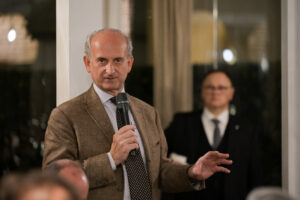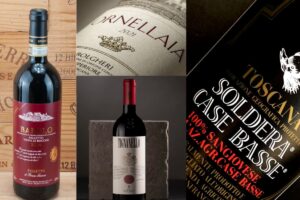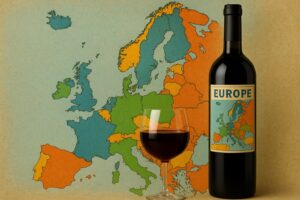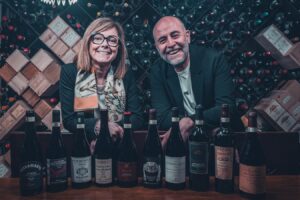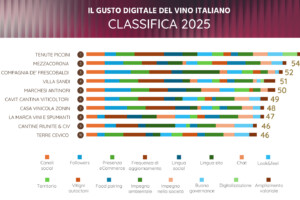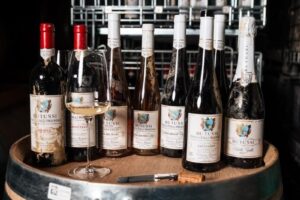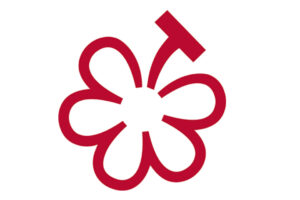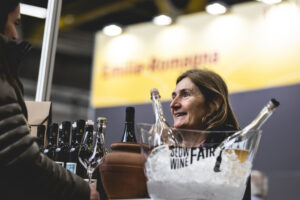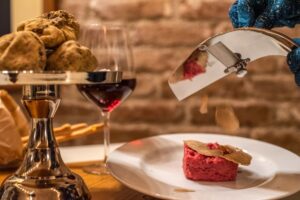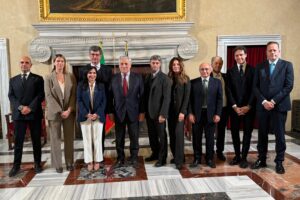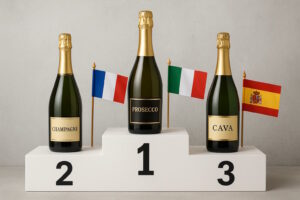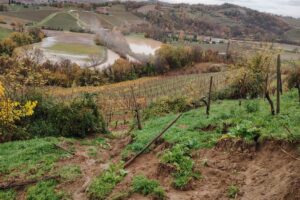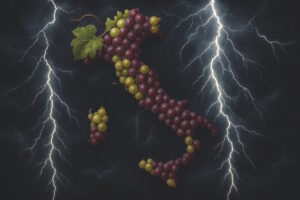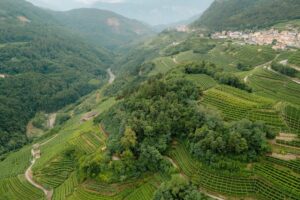Montalcino attracts more capital from other activities and solicits new entrepreneurial challenges more than any other territory in Italy. Merit goes, in large part, to its wine Brunello, which has impassioned many. But also its territory, at the same time both generous and wild, has a natural balance (like that of the Chianti Classico, Maremma, and Val d’Orcia areas), which embodies all of the poetry of the Tuscan landscape. It is a fascinating territory that best represents “Made in Italy” wine. A wine that is truly loved by Americans: one in four bottles is exported the U.S., and it is the only Italian wine that made it onto the 12 best wines of the 1900’s list. Brunello is also a star at Italian wine-bars. And there are many personalities who have been struck by this small corner of land, one of the most loved areas of Tuscany. The latest, in order of time, to fall under the spell of this captivating territory is one of American’s leading businessmen, Richard Parsons, the head honcho of the media giant AOL Time Warner. Parsons recently acquired the Il Palazzone estate, which includes 3 hectares of vineyards that produce 4,000 bottles of Brunello each year. “What we wanted -explained Parsons and his friend and partner Mario Bollag - was a hobby that would get us involved and excited”. Industrialists, professionals, and artists have been flocking to the Montalcino area for about 10 years now. Sandro Chia, for example, is an internationally renowned artist who acquired the austere Castello di Romitorio and built a modern wine cellar nearby, that is now considered a work of art. On the external walls of the cellar, the artist has in fact set dozens of statues, decorations, and architectural details that recall the history of the area, the echo of its civilization, and its natural elements. Gianfranco Soldera, an insurance broker, took on an even more ambitious endeavor with his attempts at creating a top rate wine. With much patience, research, and experiments, his attempts were a success. Today, his Brunello Case Basse is one of the top wines in this category. Diego Molinari, a pilot for Alitalia airlines, has also become a successful winemaker. His various wines under the Brunello della Cerbaiona label are among the most appreciated by wine enthusiasts. In short, there are scores of entrepreneurs from other sectors who have migrated to Montalcino over the past several years, causing the costs for a hectare of vineyard to rise to 350,000 euros (and some cases even reaching 400-500,000 euros per hectare). From Salvatore Ligresti (SaiAgricola), who produces Brunello La Poderina, to Francesco Illy (from the Trieste coffee dynasty), with his Francis-Francis label, to northern Italian sweets industrialist, Rainer Loacker, with his Corte Pavone biodynamic Brunello, to fashion magnate Massimo Ferragamo’s Castiglion del Bosco (one of the most fascinating areas around Montalcino), to real estate leader Roberto Gianelli (Tenuta San Filippo), who runs one of the youngest and most interesting wineries. Brunello is now also being produced by lawyers, like Danilo Tonon (Tenuta La Togata) and Carlo Cignozzi, who has installed speakers in his vineyards at his Al Paradiso di Frasssina and blasts Mozart and Vivaldi for his grapes. There are also a few female entrepreneurs who have followed the switch to winemaking. Elisabetta Gnudi Angelini, passionately runs two companies, Altesino and Caparzo. Another northern Italian producer, Enrico Martellozzo, whose family has been in the winemaking business for over 100 years with Bellussi Spumanti of Valdobbiadene, in the heart of Prosecco country, has also started dabbling in Brunello production. So, why does this “myth”, invented in the 1800’s by Garibaldian, Ferruccio Biondi Santi, and the first Italian wine to have the DOCG decree from the President of the Republic in 1980, attract so many? Surely it is because of its San Giovese grapes, and for the fact that it can be produced and bottled only in the municipality of Montalcino, for its optimum microclimate and particular chemical structure, and because only a few million bottles of it are produced (about 6 million per year, of which 60% is shipped abroad). Barely two hundred (195 to be exact) wineries, earned over 150 million euros in 2005. At “Benvenuto Brunello”, the annual kermes held in Montalcino (this year on February 24th and 25th), entrepreneurs, buyers, and journalists from all over the world arrived for the presentation of the 2001 Brunello, and Reserve 2000, and for the official rating of the 2005 harvest (which received an almost perfect score of four - out of five - stars. And “Benvenuto Brunello” was an occasion to taste, not only the “new arrivals” but also production from historic names: from Biondi Santi, the label that “invented” Brunello at the end of the 1800’s, and the Fattoria dei Barbi of the Colombini Cinelli family, to Castello Banfi, one of the best known Brunellos worldwide, and which is responsible for launching the Montalcino territory, to the “small but great” Casanova di Neri, the only Brunello that reached common accord among all of the wine guides for 2006.
Brunello di Montalcino 2005 - four star rating
2005 was an excellent year for Brunello according to experts, who awarded the latest harvest from Montalcino four stars out of a five star maximum rating.
The rating was determined by the Brunello Consortium, which is made up of 20 important enologists, after scrupulous evaluations (chemical-physical and organoleptic), as well as considerations made in regards to the meteorological developments of the past year.
“2005 was truly a good harvest - explained Filippo Fanti, Consortium president - characterized by equilibrated climactic conditions, besides a rainy spell in September, which however did not cause any consequences for the harvest in Montalcino. The result? A quality Brunello, that can be safely destined for ageing”.
The Curiosity - Brunello di Montalcino “Identification Card” Online
Just insert the bar code number from a bottle of wine on the Brunello Consortium’s web site and get all of the useful and detailed information desired. Brunello is the first top Italian wine to offer its connoisseurs an online “Identification Card”. And by entering the bar code number of a bottle that has been acquired on the Brunello Consortium site (www.consorziobrunellodimontalcino.it) one has immediate access to a number of interesting facts: how many similar bottles have been produced, personal information of producer and direct link to their website, specific analytic data of wine like alcohol and acidity levels.
This is a definitive step towards the complete traceability of all wines that fall under the denomination of the Consortium for the Tutelage of Montalcino Wines. In fact, the “Id Card” is already available for Brunello di Montalcino from 1999, Rosso di Montalcino from 2003, and Moscadello di Montalcino and Sant’Antimo from January 1, 2005.
Director of the Brunello di Montalcino Consortium, Stefano Campatelli, explains: “This is an important step towards the concept of total transparency and traceability: with this system consumers have, above-all, the guarantee that the label truly corresponds with the bottle it has been applied to, rendering it impossible, or at the worst revealing, attempts at “falsification”. As well, with this “Id Card” producers create a sort of pact with consumers, which does not finish with the acquisition of a bottle of wine, but guarantees information and assistance for those who buy a wine from the Montalcino area. This computerized identification card is no other than the final phase, the last step in a series of controls made by the Consortium throughout the process, from the vineyard to the bottle, as tutelage for both producers and, above all, consumers”.
Copyright © 2000/2025
Contatti: info@winenews.it
Seguici anche su Twitter: @WineNewsIt
Seguici anche su Facebook: @winenewsit
Questo articolo è tratto dall'archivio di WineNews - Tutti i diritti riservati - Copyright © 2000/2025










